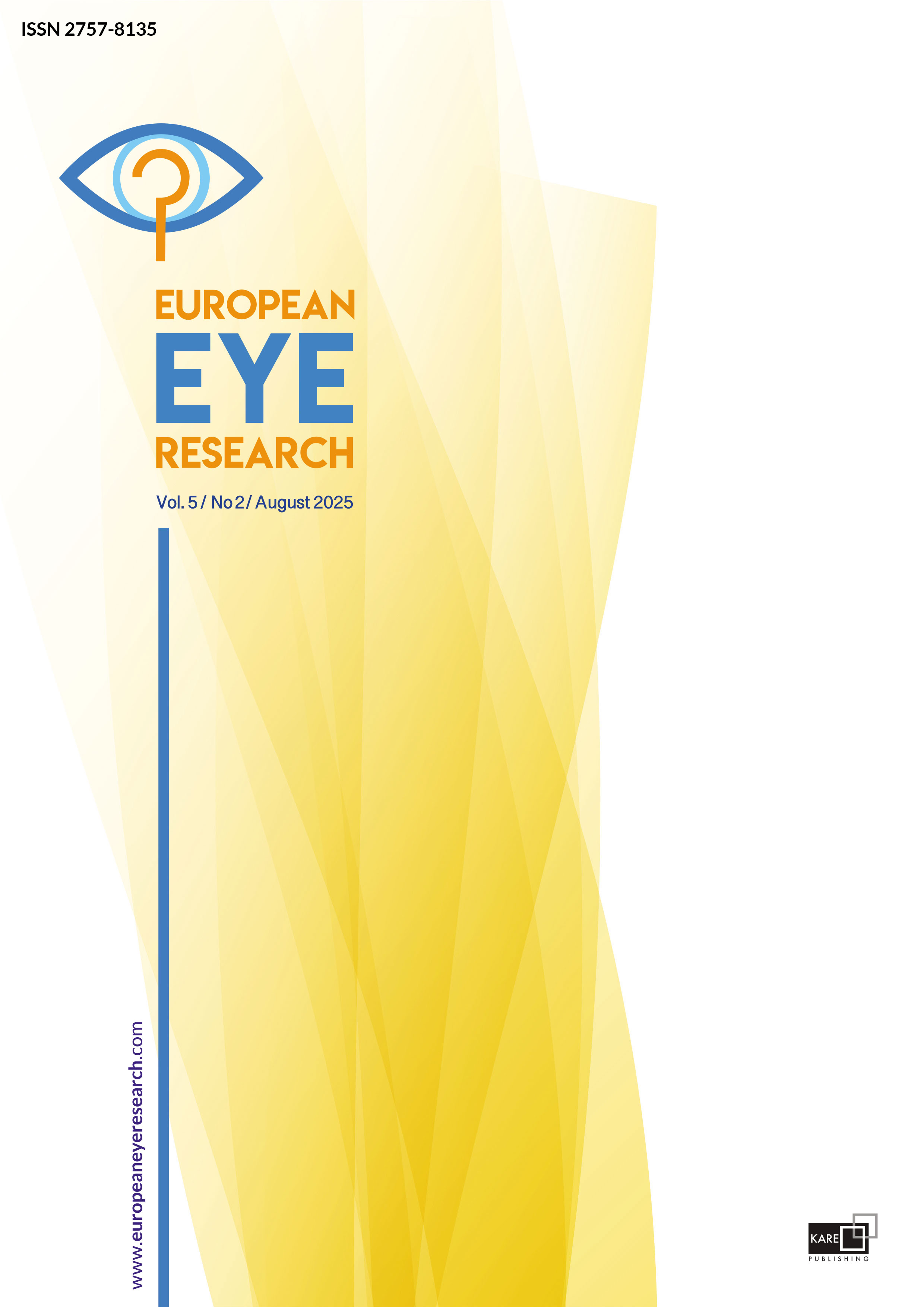

The 100 most-cited articles in turkish ophthalmology: A bibliometric analysis of research trends and scientific impact
Ali Hakim Reyhan1, Mustafa Berhuni2, Ibrahim Edhem Yilmaz21Department of Ophthalmology, Harran University Faculty of Medicine, Sanliurfa, Türkiye2Department of Ophthalmology, Gaziantep Islamic University of Science and Technology Faculty of Medicine, Gaziantep, Türkiye
PURPOSE: This bibliometric study analyzed the characteristics, citation patterns, and scientific impact of the 100 most-cited articles in Turkish ophthalmology journals from 2010 to 2023.
METHODS: A comprehensive bibliometric analysis was conducted using the Dimensions.ai database between October 20 and 25, 2024. The analysis included citation metrics (total citations, recent patterns, Relative Citation Ratio [RCR], Field Citation Ratio [FCR], and Altmetric scores), content characteristics (study design, subspecialty categorization, keyword analysis), and institutional contributions. We evaluated the temporal distribution of publications, mapped collaboration networks, and analyzed the evolution of research themes. Study designs were categorized as reviews, original research, or case reports, while institutional analysis identified leading research centers and their collaborative patterns.
RESULTS: The Turkish Journal of Ophthalmology dominated the highly cited publications, most of which were review articles published between 2015 and 2021. The most cited article, focused on thyroid-associated ophthalmopathy, received 105 citations (RCR: 4.03, FCR: 27.8). Ege University, Ankara University, and Başkent University were among the leading institutions, with significant contributions from Sait Eğrilmez and Melis Palamar. Main research areas included retinal diseases, corneal/ocular surface disorders, and cataract/refractive surgery. Recent publications (2020–2021) demonstrated notable citation momentum in the fields of artificial intelligence and allergic conjunctivitis.
CONCLUSION: This study provides an updated profile of ophthalmology research in Türkiye, highlighting prevalent topics, influential institutions, and publication trends. While aligning with global trends, Turkish research also focuses on regional interests such as thyroid-associated ophthalmopathy. Enhancing international collaboration and diversifying research topics may further increase the global impact and visibility of Turkish ophthalmology literature.
Manuscript Language: English



